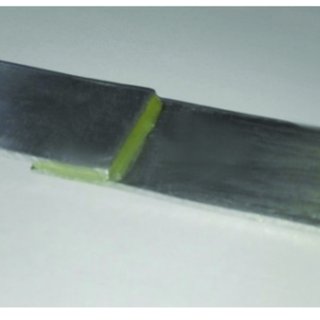CONTACT US
Some tools for the analysis the interfacial interaction in the epxoy adhesive gaps/joints:
1.Atomic force microscopy (AFM) - AFM can be used to directly visualize the adhesive interface and measure the interfacial forces between the epoxy adhesive and the substrate.
2. X-ray photoelectron spectroscopy (XPS) - XPS provides information about the chemical composition and bonding states at the interface, helping to understand the interfacial interactions in epoxy adhesive joints.
3. Fourier-transform infrared spectroscopy (FTIR) - FTIR can analyze the chemical bonds and functional groups present at the interface, revealing the intermolecular interactions between the epoxy adhesive and the substrate.
4. Dynamic mechanical analysis (DMA) - DMA measures the mechanical properties of the epoxy adhesive joint and can be used to study the adhesion strength and interfacial compatibility.
5. Scanning electron microscopy (SEM) - SEM can provide detailed images of the epoxy adhesive joint surfaces, allowing for a visual analysis of the interfacial interactions and adhesive failure modes.
6. Contact angle measurements - Contact angle analysis can determine the wetting behavior of the epoxy adhesive on the substrate surface, indicating the level of interfacial adhesion.
7. Pull-off test - The pull-off test measures the force required to separate the epoxy adhesive joint, providing information on the adhesive strength and interfacial bonding properties.
8. Interfacial shear strength measurements - Various techniques, such as single-lap shear and double-cantilever beam tests, can determine the shear strength at the epoxy adhesive joint interface, indicating the efficiency of interfacial bonding.

9. Interfacial fracture toughness analysis - Fracture mechanics methods, including the critical stress intensity factor (KIC) determination and J-integral measurements, can assess the toughness and crack resistance of the adhesive joint interface.
10. Interfacial impedance spectroscopy - By using impedance spectroscopy, the electrical properties of the epoxy adhesive joint can be evaluated, allowing for analysis of the interfacial interactions and any changes due to degradation or environmental exposure.
11. Differential scanning calorimetry (DSC) - DSC can detect changes in heat flow during curing of the epoxy adhesive, providing insights into the cross-linking and curing kinetics at the interface.
12. Interfacial rheology measurements - Rheological analysis can determine the viscoelastic properties of the epoxy adhesive joint interface, helping to understand the interfacial interactions under different loadings and deformation conditions.
13. Microindentation - Microindentation can be used to measure the hardness and elastic modulus at the epoxy adhesive joint interface, providing information on the mechanical properties and interfacial compatibility.
14. Thermogravimetric analysis (TGA) - TGA can assess the thermal stability and degradation behavior of the epoxy adhesive joint interface, revealing the impact of temperature on interfacial interactions and adhesive performance.
15. In-situ microscopy - In-situ microscopy techniques, such as optical microscopy or confocal microscopy, can capture real-time images or videos of the interfacial interactions during adhesive joint formation and deformation, enabling the visualization of dynamic interfacial processes.
16. Surface energy measurements - Surface energy analysis can determine the interfacial energy between the epoxy adhesive and the substrate, providing insights into the adhesion mechanism and the role of interfacial interactions in the overall bonding strength.
17. Time-of-flight secondary ion mass spectrometry (ToF-SIMS) - ToF-SIMS can provide high-resolution chemical imaging of the epoxy adhesive joint interface, allowing for the identification and mapping of specific chemical species and functional groups at the interface.
18. Neutron reflectometry - Neutron reflectometry can probe the interfacial structure and thickness of the epoxy adhesive joint, providing information on the molecular arrangement and interfacial interactions.
By employing these analysis techniques, researchers can gain a comprehensive understanding of the interfacial interactions in epoxy adhesive joints, enabling the optimization of adhesive properties and the development of high-performance adhesive systems.